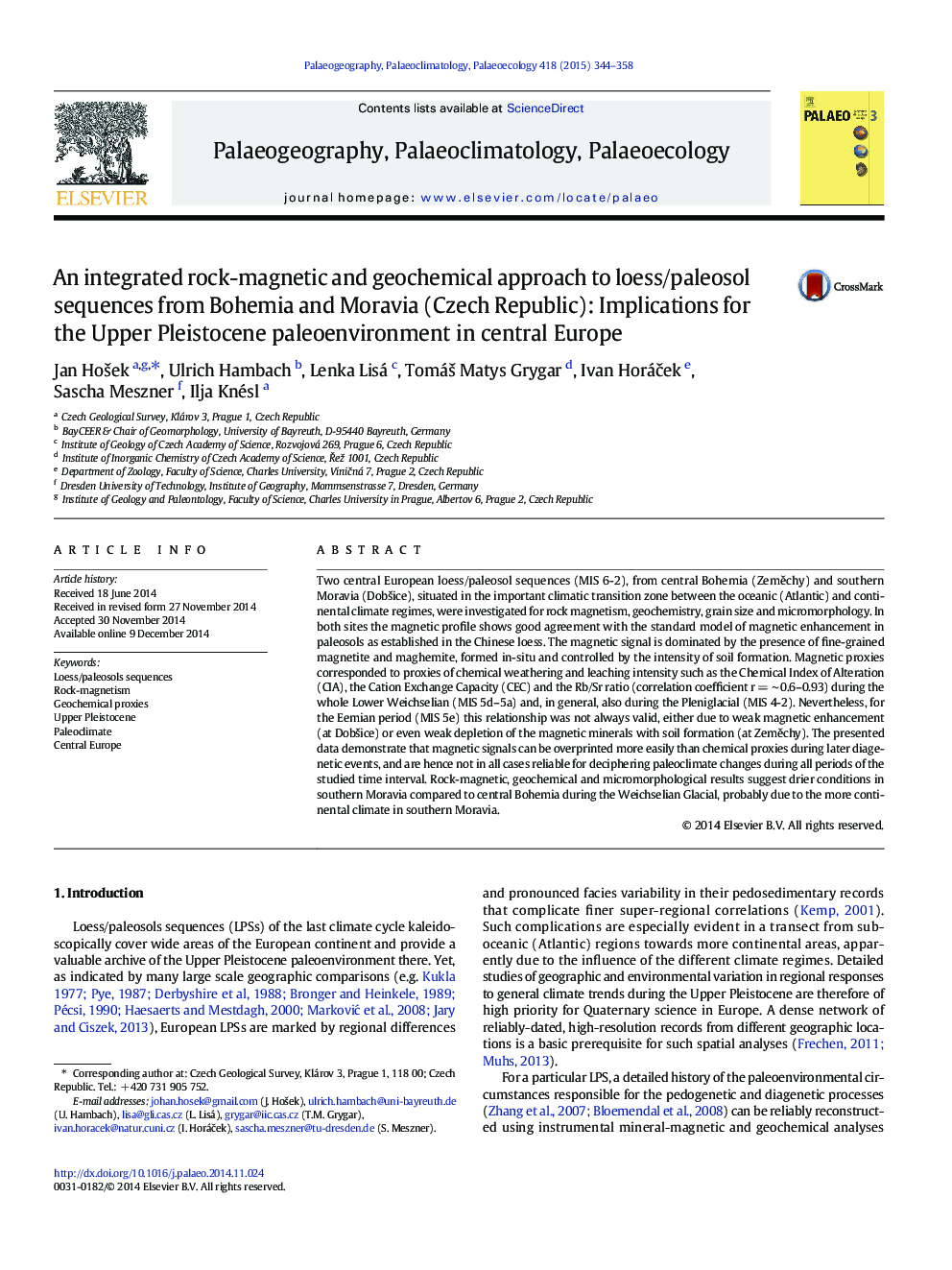| کد مقاله | کد نشریه | سال انتشار | مقاله انگلیسی | نسخه تمام متن |
|---|---|---|---|---|
| 6349825 | 1622172 | 2015 | 15 صفحه PDF | دانلود رایگان |
عنوان انگلیسی مقاله ISI
An integrated rock-magnetic and geochemical approach to loess/paleosol sequences from Bohemia and Moravia (Czech Republic): Implications for the Upper Pleistocene paleoenvironment in central Europe
ترجمه فارسی عنوان
یک رویکرد راک-مغناطیسی و ژئوشیمیایی به توالی لس / پائئوسول از بوهمیا و موراویا (جمهوری چک): پیامدهای پیلووئنتوئید بالا پلهیستوکن در اروپای مرکزی
دانلود مقاله + سفارش ترجمه
دانلود مقاله ISI انگلیسی
رایگان برای ایرانیان
کلمات کلیدی
موضوعات مرتبط
مهندسی و علوم پایه
علوم زمین و سیارات
فرآیندهای سطح زمین
چکیده انگلیسی
Two central European loess/paleosol sequences (MIS 6-2), from central Bohemia (ZemÄchy) and southern Moravia (DobÅ¡ice), situated in the important climatic transition zone between the oceanic (Atlantic) and continental climate regimes, were investigated for rock magnetism, geochemistry, grain size and micromorphology. In both sites the magnetic profile shows good agreement with the standard model of magnetic enhancement in paleosols as established in the Chinese loess. The magnetic signal is dominated by the presence of fine-grained magnetite and maghemite, formed in-situ and controlled by the intensity of soil formation. Magnetic proxies corresponded to proxies of chemical weathering and leaching intensity such as the Chemical Index of Alteration (CIA), the Cation Exchange Capacity (CEC) and the Rb/Sr ratio (correlation coefficient r = â¼Â 0.6-0.93) during the whole Lower Weichselian (MIS 5d-5a) and, in general, also during the Pleniglacial (MIS 4-2). Nevertheless, for the Eemian period (MIS 5e) this relationship was not always valid, either due to weak magnetic enhancement (at DobÅ¡ice) or even weak depletion of the magnetic minerals with soil formation (at ZemÄchy). The presented data demonstrate that magnetic signals can be overprinted more easily than chemical proxies during later diagenetic events, and are hence not in all cases reliable for deciphering paleoclimate changes during all periods of the studied time interval. Rock-magnetic, geochemical and micromorphological results suggest drier conditions in southern Moravia compared to central Bohemia during the Weichselian Glacial, probably due to the more continental climate in southern Moravia.
ناشر
Database: Elsevier - ScienceDirect (ساینس دایرکت)
Journal: Palaeogeography, Palaeoclimatology, Palaeoecology - Volume 418, 15 January 2015, Pages 344-358
Journal: Palaeogeography, Palaeoclimatology, Palaeoecology - Volume 418, 15 January 2015, Pages 344-358
نویسندگان
Jan HoÅ¡ek, Ulrich Hambach, Lenka Lisá, TomáÅ¡ Matys Grygar, Ivan HoráÄek, Sascha Meszner, Ilja Knésl,
